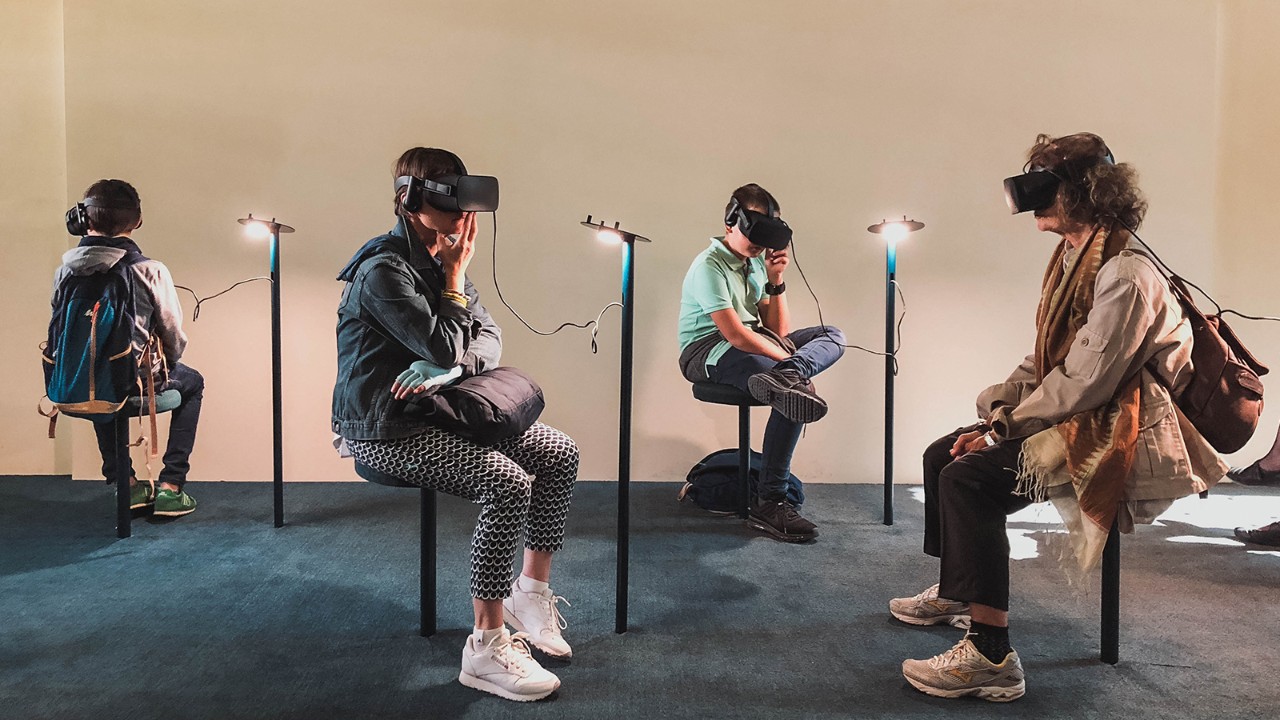With technologies such as virtual reality, augmented reality and mixed reality, the real and digital worlds are increasingly merging. This article deals with the difference between the terms, which are often used synonymously, and how the technologies can be used in the insurance industry.

Virtual reality, augmented reality and mixed reality: although the terms are not really new, they are often used vaguely and understood synonymously. This is partly because they are not self-explanatory, partly because concrete use cases are lacking.
So let's start by distinguishing the three terms from each other through definitions.
Virtual Reality (VR) describes a computer-generated environment that provides a reality-like experience by immersing the user in a virtual world. The VR experience is often created by special devices such as VR glasses.
The VR world is completely simulated by computers and the user is fully immersed in these worlds. For this reason, the VR glasses or headsets are completely closed.
Augmented reality (AR) refers to a technology that integrates digital information into the real world. AR experiences can be enabled by special devices such as smartphones or AR glasses.
In AR applications, unlike VR, the devices are designed to be open so that the natural environment can be augmented with digital elements. So instead of creating a completely artificial world, AR is about merging the real and digital worlds.
Mixed Reality (MR) is the most difficult approach to define. The term is not used consistently even by technology manufacturers. MR is best described as a technology that combines VR and AR elements to enable seamless interaction between the real and virtual worlds.
The idea of MR is so interesting because it aims to combine the advantages of AR and VR and at the same time compensate for their disadvantages.
All three approaches have one thing in common: they cannot do without additional technology. They are also not a direct development of existing devices, such as the smartphone, which was developed from the first mobile phones. This makes broad market penetration much more difficult.
The application of the various technologies will therefore initially be limited to very specific scenarios. Nevertheless, it cannot be ruled out that in the future we will see a completely new class of devices for the mass market that, for example, combines VR/AR with the functions of our current smartphones. The idea that we will wear smart glasses but have our hands free has a certain charm for me...
Of course, there are already the first concrete use cases for the various technologies in the insurance industry. Virtual reality for example is used at ERGO to train sales partners. With the help of VR technology, a variety of realistic scenarios can be simulated to train consulting. In this way, the sales partners gain comprehensive experience.
In the simulation, sales partners can even change perspectives and slip into the role of a customer: how do they perceive certain conversation situations and how do they find their way in the digital ERGO world? With this knowledge, the sales partners can then shape customer conversations in the real world in a more active and empathetic way.
VR technology can also be used in consulting and prevention. For example, sources of danger at home can be experienced in a virtual environment. Risks become much more tangible than in a theoretical consulting session. The insurance customer gets a better feeling for his personal insurance needs.
An example of AR in the insurance industry is the extended claims settlement. With the help of AR, insurance employees can superimpose additional digital information such as measured values or damage reports directly onto the live image of the affected object.
This digitally supported form of claims settlement is a relevant development, as it helps to use resources carefully. The employees save time and ways and the assessment of claims can be carried out much faster.
From virtual reality, it's not far to the metaverse. So what will the future bring?
This question can hardly be answered today. What the artificial 3D internet world will actually look like is still unclear.
For instance, customers could visit a virtual insurance agency to get advice or to discuss a claim settlement. Perhaps insurance for new digital assets will be in demand and completely new insurance products will come up. Recruiting interviews could be conducted in a digital environment and sponsoring activities could shift to the metaverse.
Whether these ideas can really be implemented remains to be seen. It will certainly take some time before that happens. In the meantime, VR, AR and MR applications will continue to develop and either build a bridge to the metaverse – or even make it redundant.
Text: Falk Hedemann
Most Popular